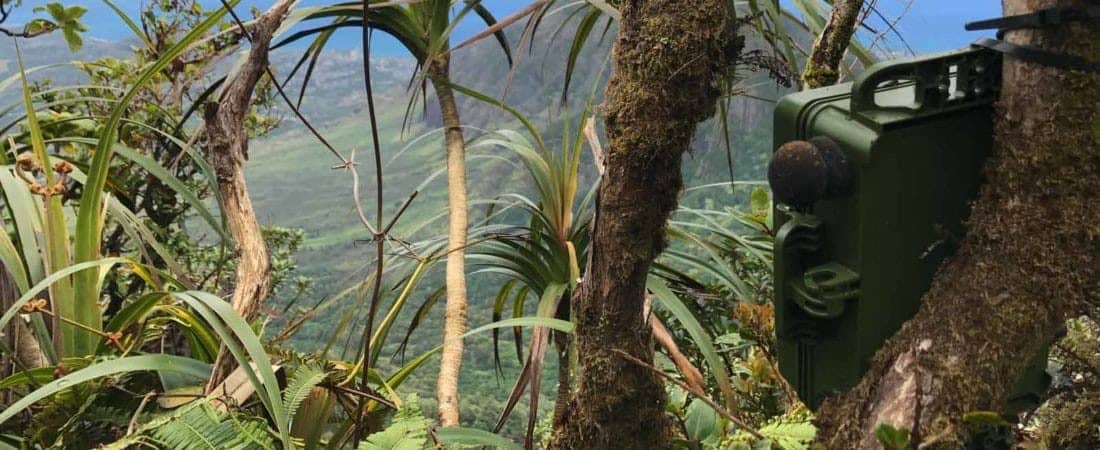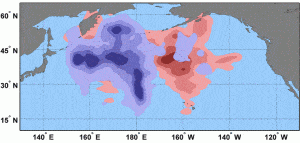Our background and interests lie in what makes island bird species unique and how threats to their survival and reproduction can change specific demographic parameters. Below is a sample of current research; links embedded in the text will direct you to our publications on these topics.

Avian disease
For more than 20 years, we have been researching the effects of habitat disturbance and mosquito-borne diseases on the demography of the Hawaii Elepaio. Download the 2017 report here and read more about previous years in publications 14, 32, and 60.
We have also worked with avian pox in both Laysan and Black-footed Albatrosses, where we have found that while it doesn’t decrease the fledging rate of infected chicks, it does impact their long-term survival and recruitment probability as adults.
Seabird and forest bird demography
Using long-term mark-recapture data in Hawaiian seabirds (Laysan Albatross) and forest birds (Elepaio, Puaiohi, and Maui forest birds), we use program MARK to estimate survival and various life history parameters of these species.
Population genetics
We have worked with mitochondrial DNA, microsatellites, and nuclear markers to examine the population genetics of Laysan and Black-footed Albatrosses. We have also done systematics work on the Elepaio species complex and found evidence to support single island species (vs multiple sub-species).
Reproductive biology and behavior
We are interested in the factors affecting reproductive success and bird behavior. We have a long-term study investigating the adaptive value of same-sex pairing and sex ratio skews in Laysan Albatrosses. We also work with collaborators on egg turning and incubation behavior in albatrosses, particularly to improve our incubation techniques.
In the Oahu Elepaio, our long-term research has documented the evolution of increased nesting height in response to rat predation.
At-sea behavior of seabirds
We have been tracking the at-sea distribution of seabirds for over a decade. Our work focuses primarily on Laysan Albatrosses, Wedge-tailed Shearwaters, and Red-tailed Tropicbirds. Our goal is to learn more about the pelagic habitat use of this group of birds and inform managers about potential conflicts with offshore wind energy projects.
Some results from previous tracking on Laysan Albatross can be downloaded below. Purple colors are Laysan Albatross tracked from Kure Atoll; Pink is from Kaena Point.

